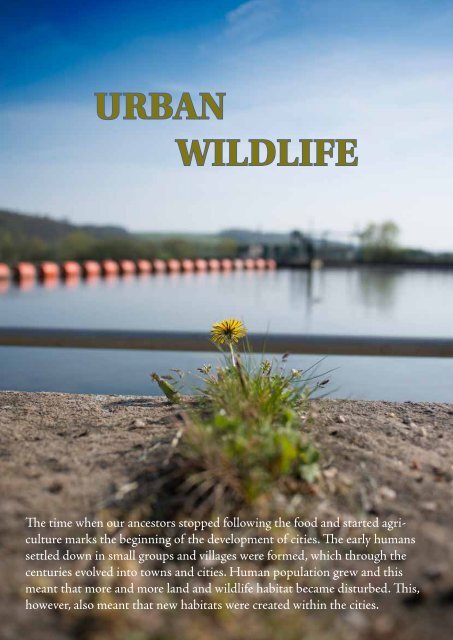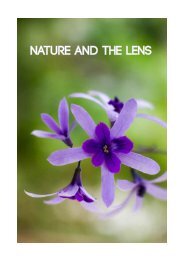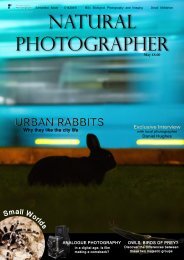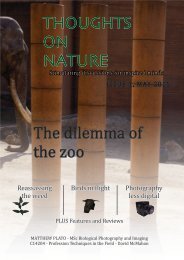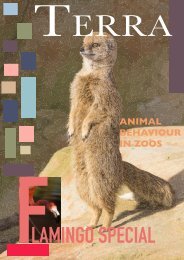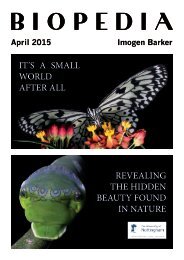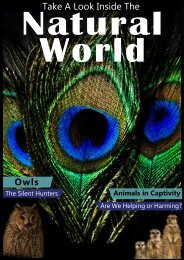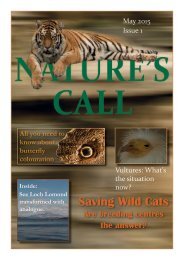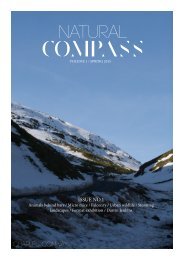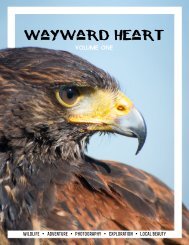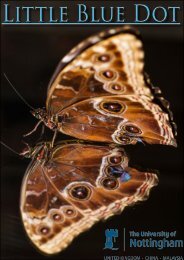NATURA
You also want an ePaper? Increase the reach of your titles
YUMPU automatically turns print PDFs into web optimized ePapers that Google loves.
URBAN<br />
WILDLIFE<br />
Image 13. Ivy Hedera helix growing on a house wall in Rylands, Nottingham. [Non-marked]<br />
The time when our ancestors stopped following the food and started agriculture<br />
marks the beginning of the development of cities. The early humans<br />
settled down in small groups and villages were formed, which through the<br />
centuries evolved into towns and cities. Human population grew and this<br />
meant that more and more land and wildlife habitat became disturbed. This,<br />
however, also meant that new habitats were created within the cities.<br />
The evolution from being societies of farmers to industrial<br />
cities happened in a relatively short time in the UK.<br />
In a while, the connection between humans and the wild<br />
nature decreased significantly. Before, nature was just<br />
a part of everyday life for most people, farmers used to<br />
harvest their land to get food for their families. Hunting<br />
was also a method to get food and nature was just a part<br />
of everyones life. After the formation of villages and<br />
cities and the rise of the industrial revolution, things<br />
were not the same. After a day at the factory the need<br />
for nature or natural environment became more and<br />
more important. People felt the need to have gardens,<br />
and open spaces were arranged in the cities.<br />
Image 12. (to the left). Dandelion Taraxacum sp. Growing through asphalt<br />
on the riverside of Trent, Beeston Marina, Nottingham.<br />
Some species can learn easily, the main effect of success<br />
is often how good they are in getting food or how they<br />
can tolerate environmental stress or environmental<br />
changes. Adaptation is the basis of evolution. Some species<br />
have shown remarkable adaptation in getting food<br />
in urban environments, species such as pigeons, gulls<br />
and many others. In the cities, pollution and the presence<br />
of humans has a huge effect on animals and plants.<br />
Some plants can tolerate pollution remarkably well and<br />
they can show tremendous adaptation to growing in little<br />
soil or on walls (like the Ivy plant seen on the picture<br />
above growing in Rylands, Nottingham).<br />
The presence of humans can be both positive and negative.<br />
For those animals that dear to be close to humans,<br />
the source of food can be huge. Man-made structures<br />
provide shelter, and many species have adapted to live<br />
in our houses. This can be of huge advantage, since the<br />
houses are heated and often have the same temperature<br />
and humidity throughout the year. Some species that<br />
did not use to live in the UK have settled in this stable<br />
habitat. One example is the Pharaoh’s ant Monomorium<br />
pharaonis, a species that came to Britain in 1828 and is<br />
now found all around the country. Many other species<br />
share our houses with us, for example spiders, cockroaches<br />
and woodlice.<br />
Image 14. American cockroaches Periplaneta americana.


